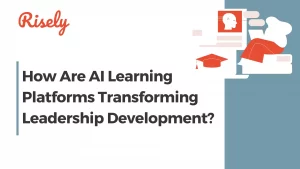How do Mental Models help in Effective Decision-Making as a Manager?
As a manager, your days are a whirlwind of choices: launching new products, managing teams, and steering your company towards success. But with so much on your plate, how do you ensure you’re making the right call, every single time? The answer lies in a powerful tool you already possess: mental models. These aren’t fancy gadgets or complex formulas; they’re the frameworks you use to understand the world around you. By leveraging them effectively, you can transform from a tightrope walker to a confident decision-making machine. Intrigued? In this blog, we’ll delve into the world of mental models, exploring how they can empower you to make clear, informed decisions – even under pressure. We’ll also shed light on their limitations, so you can use them with a critical eye. So, buckle up and get ready to conquer decision-making process once and for all!What are Mental Models?
Before beginning to work with mental models or even weighing the pros and cons of using them, it is essential to understand the term “mental model.” A model is a simplified and capsule representation of a big concept. Moreover, it presents a complex issue in an easy-to-understand and consumable form. Mental models do the same in our minds. They break down chaotic and multi-faceted life into simplistic concepts so they can make choices easily. In common managerial parlance, a mental model refers to the set of existing experiences and internal norms that a person uses as the basis for interpreting and understanding things and events around them. It also encompasses the values, beliefs, and norms the person holds. In simple terms, a mental model serves as the frame of reference for the person. The concept innate in the model is then applied to derive meaning from all everyday situations. For instance, a manager or leader may have a mental model that working more equals more output which means more success. Now, if and when this person comes across an individual who prefers to work for a short duration but does so with focus and efficiency, they will not see their work as valuable. This is because it does not satisfy the core condition of their frame of mind, i.e., success is contingent upon putting in more hours. However, they might appreciate someone simply working for hours without success! As a team manager, this can be a highly problematic scenario. This sums up how mental models work – simplify, then apply.Benefits of using Mental Models in Decision Making
Making good decisions as a manager can be tricky under the best circumstances. But when things are going south, mental models can help significantly. By staying calm and organized, managers can make better decisions that lead to positive outcomes. Additionally, by taking into account past experiences, they can develop solutions faster and with less risk. And if the decision-making process is proving too complicated, using a mental model can provide a framework for thinking about the problem. In short, using mental model can help managers achieve better decision-making outcomes in any situation. When making a decision as a manager, you need to remember that you are doing it on behalf of your team or organization instead of yourself. Therefore, it is vital to recognize that the repercussions of your decisions will make an impact beyond you. You can use mental model to help you out of difficult decision-making situations in several ways.- Understand the person in front of you: You can use mental models by applying the core values and beliefs held by the other party to understand better and anticipate their response. Based on this, you can make tweaks in your decisions and processes accordingly.
- Increase clarity: At times, you are bound to feel stuck in a mess. However, you can rope in mental model to get a dose of clarity in such times. They will help you see through the situation by providing a basis to form a judgment. Further, this will make you more confident in the approach you eventually adopt.
- Streamline responses organization-wide: Creating several mental model adopted across the entire organization will help you coordinate the response from your organization. As a manager, you can aid the development of mental model built around your organization’s core values and vision. Based on these, the decisions made across various contexts and circumstances will carry a central philosophy.
- Develop a common perspective: Mental models will help you formulate a common view or lens for the entire organization. Without this, your organization will be prone to frequent disarray and disorder. On the flip side, you can present a unified view for the whole organization, which is great for your reputation.
- Speed-up decision-making: Lastly, and most importantly, mental models add amazing speed to the decision-making process. This happens as they work to transform the problem into an understandable format with a few options to choose from. Quick decision-making done smartly is the way to success.
How can Managers use Mental Models for Decision-Making?
Now that we have noted that mental models offer some indispensable benefits, we need to see how you can use them as a manager during decision-making. Making decisions as a manager can be a daunting task. However, by using mental models, managers can take the pressure off and quickly find solutions to difficult decisions. In fact, by using mental models, managers can increase their productivity and efficiency in the workplace. So, why not give them a try? You might be surprised at how helpful they can be in pursuing success. You must go through a few simple steps to add mental models to your process. The Process: The first thing to do while setting up a mental model is to conduct a thorough assessment. A few might be preexisting even when you have not placed mental models in the system. Therefore, it is imperative to understand them and how they have impacted them. If you discover a negative impact, getting rid of those models before applying new ones is essential. In the initial step to creating mental models, you must identify your core values and beliefs. This can come from the organization’s experience and vision document. Moreover, you can also take your team members’ input to understand their mental models. These measurements will make up the design of your solution. Next up, you can create a mental model diagram or a mental model chart.Other Interesting Reads
Limitations of using Mental Models in Decision Making
Mental models are like your trusty toolbox – full of instruments to help you make intelligent decisions as a manager. But just like any tool, they have their limitations. Here’s why it’s crucial to be aware of the potential pitfalls: The Curse of Oversimplification: Imagine trying to fix a watch with a hammer. Mental models can be fantastic for simplifying complex situations, but sometimes they oversimplify too much. Important details get lost in the shuffle, leading to poor decisions. The Echo Chamber Effect: Our experiences and beliefs shape our mental models, which is great, but it can also create a blind spot. If your team is too similar, your model only reflects a narrow viewpoint, potentially overlooking valuable alternative solutions. The Subjectivity Trap: Let’s be honest: complete objectivity is a myth. Our biases and perspectives influence how we build mental models. While a diverse team can help mitigate this, subjectivity can still creep in. So, what can you do? Don’t ditch your mental models entirely! Here’s the key:- Acknowledge the limitations. Recognize that mental models are a starting point, not a crystal ball.
- Embrace diverse perspectives. Seek out different viewpoints to challenge assumptions and enrich your model.
- Gather high-quality data. Don’t let your model exist in a vacuum. Support it with solid data and research.
- Continuously refine. The business world is dynamic, so your mental models should be too. Be open to adapting them as you learn and grow.
Conclusion
Don’t let mental models become mental roadblocks! These frameworks are powerful tools, but they need constant evaluation and refinement. As your company culture evolves, so should your mental models. Here’s the key takeaway: embrace lifelong learning, stay curious about new perspectives, and be willing to adapt your models to fit the ever-changing business landscape.By fostering a culture of open communication and encouraging diverse viewpoints, you can ensure your mental models are grounded in reality and not outdated assumptions. Mental models can be used in various decision-making contexts, such as strategic planning, finance, and human resources management. Remember, the best decisions are often made at the intersection of experience and fresh thinking. So, leverage your mental models, challenge them when necessary, and watch your decision-making skills soar to new heights! Now, go forth and lead with clarity and confidence!
Get the free problem-solving toolkit to Improve decision-making in your team.
Access frameworks that help you develop a mindset to tackle problems heads-on.
Other Related Blogs
Top 15 Tips for Effective Conflict Mediation at Work
Top 15 Tips for Effective Conflict Mediation at Work As a manager or leader, you might be familiar with the conflicts that arise in the workplace. It’s not always easy…
Top 10 Games for Negotiation Skills to Make You a Better Leader
Negotiation skills are essential in today’s workplace and can be honed through various methods. One fun and effective way of becoming better at it are games for negotiation skill. These…
Manager Effectiveness: A Complete Guide for Managers in 2024
Manager Effectiveness: A Complete Guide for Managers in 2024 Manager effectiveness is everyone’s favorite buzzword. But the road to achieving it is trickier than it looks like! While manager effectiveness…
5 Proven Ways Managers can Build Collaboration in a Team
5 Proven Ways Managers can Build Collaboration in a Team In today’s fast-paced world, team collaboration is the key to success. But, not all workplaces are conducive to collaborative teams.…







